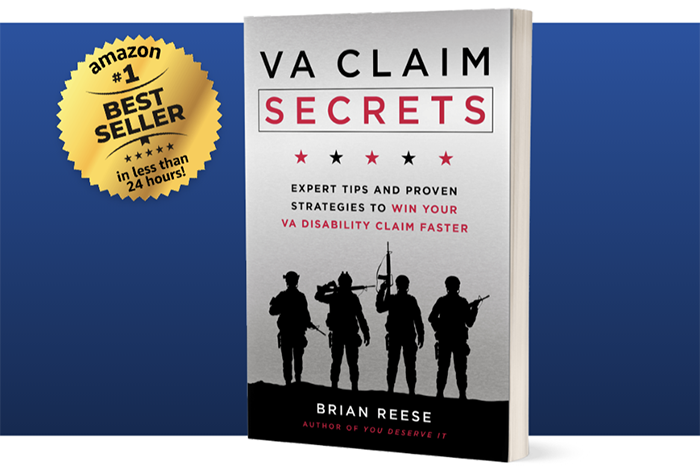Looking for Expert-Level VA Claim Answers?📱Call Us Now! 737-295-2226
Fellow disabled veterans, if you’ve ever wondered about the best way to get 100 VA disability, listen up because this expert-level guide is for you!
Brian Reese here, VA disability claim expert, CEO of Military Disability Made Easy, and founder of VA Claims Insider.
Today I’ll be breaking down the best way to get 100 VA disability using tips, strategies, and lessons learned from helping over 15,000 disabled veterans increase their VA disability rating through our education-based resources.
Oh, and just so you know, these VA disability increase strategies work regardless of your current VA rating, but especially if you’re wondering how to increase VA disability from 80 to 100 and how to increase VA disability from 90 to 100.
List of the Top 7 Best Ways to Get 100 VA Disability
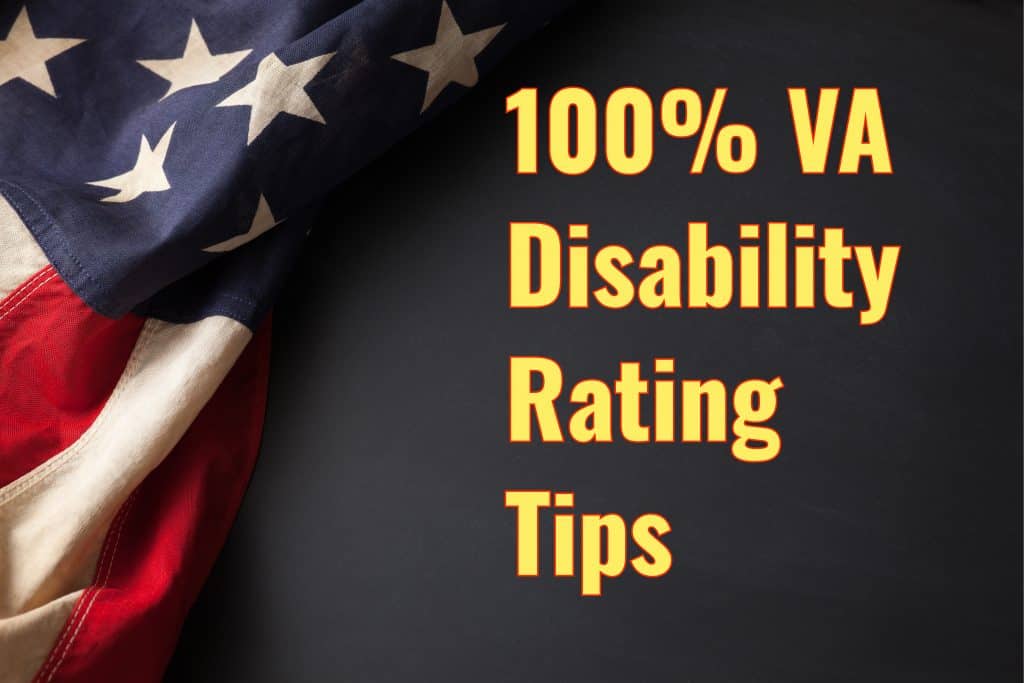
- Tip #1: Use MyHealtheVet to Get Your Current Symptoms Documented in VA Medical Records
- Tip #2: Go for High-Value VA Disability Claims (e.g., Mental Health, Lifestyle Impact Claim, Migraines, Sleep Apnea)
- Tip #3: Have a Doctor Complete DBQs for Conditions Already Service Connected
- Tip #4: File for Secondary Service Connection with Credible Medical Nexus Letters
- Tip #5: Obtain a Buddy Letter from a First-Hand Witness
- Tip #6: Prepare to Win Your Compensation and Pension (C&P) Exam
- Tip #7: File for Total Disability Individual Unemployability (TDIU)
Okay, let’s explore in detail how to get a 100 percent VA disability rating, regardless of your current rating or even if you’ve been denied VA benefits in the past.
Veterans, if you’ve ever wondered “How to Get 100 VA Disability,” pay close attention because these tips are for you:
VA Benefits Increase Tip #1: Use MyHealtheVet to Get Your Current Symptoms Documented in VA Medical Records
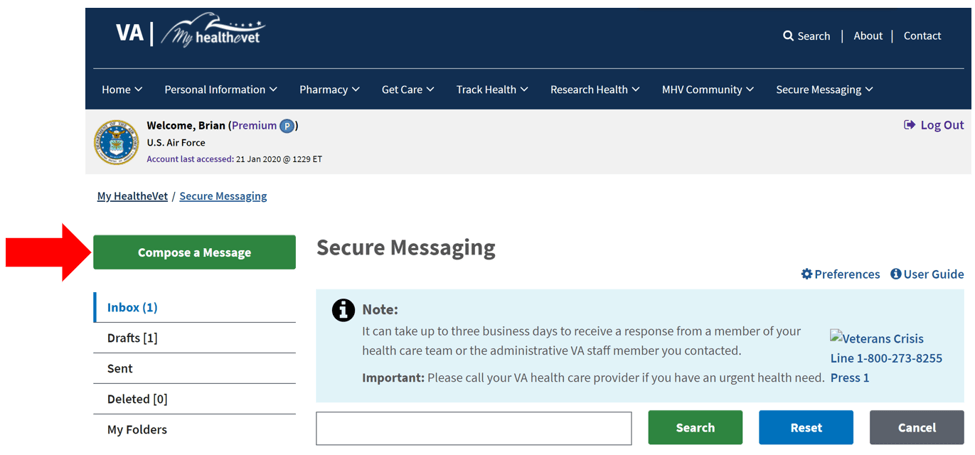
If you’re having symptoms of a disability condition, and especially if those symptoms are now worse, you need to ensure these symptoms get documented in your VA medical records.
Did you know you can securely message your VA healthcare provider, and those message notes become part of your VA medical records?
Yep, it’s the truth.
Veterans, your secure messages from MyHealtheVet go straight into your VA medical records.
This means you can document symptoms of your disabilities, which will be critical when you prepare and file a VA disability increase claim.
For example, let’s say you’re reviewing the PTSD Rating Scale and you’re already service-connected at 30% for PTSD, but you believe your mental health symptoms are much more severe, and you should be at 70% for PTSD based upon the 38 CFR VA Schedule of Ratings.
Login to MyHealtheVet and start a secure message conversation with your VA mental health provider.
You’ll want to tell them about your current mental health symptoms.
For example, you could type a message such as:
“My mental health symptoms are getting much worse. I now have hypersensitivity to loud noises, constant anxiety, severe depression, panic attacks 3-4x per week, sweating, heart pounding, tingling in my arms/mouth/lips, dry mouth, insomnia, impairment of short-term/long-term memory, decreased ability to solve problems at work, difficulty concentrating, trouble interacting with my wife and co-workers, severe anger, paranoia, delusional thoughts, suicidal ideation, and very few close friends because I don’t trust people. These symptoms affect me constantly. My current medications don’t help and, unfortunately, have severe side effects, such as diarrhea and erectile dysfunction. Please contact me right away as I need to get an appointment to see you.”
It’s imperative that your current symptoms get documented in your VA medical records.
Why do I say this?
Well, remember that all VA disability ratings come down to severity of symptoms.
You need to prove that your symptoms are now worse, and in our experience, the best way to do that is with new and relevant medical evidence.
You must explain HOW your current disability is limiting or affecting your work, life, and social functioning in a negative way.
How to Increase VA Disability from 80 to 100 Tip #2: Focus on High Value VA Disability Claims

A High-Value VA Claim is a disability condition with a “HIGH” likelihood of getting rated at 30% or higher on its own.
Focusing on High-Value VA disability claims is a great way to increase your VA disability rating.
These include VA claims such as Mental Health Conditions (e.g., Post Traumatic Stress Disorder, Major Depressive Disorder, Generalized Anxiety Disorder, and Somatic Symptom Disorder), Sleep Apnea Claims, Migraines, and Respiratory Conditions (e.g., Heart and Lung Conditions), among others.
Versus a Low-Value VA Claim, which is a disability or condition with a “LOW” likelihood of getting rated at 30% or higher on its own.
These include VA disability claims like Tinnitus, Hearing Loss, Scars, and Musculoskeletal Conditions.
>> Read my Top 10 Most Common VA Disability Claims explainer post HERE <<
VA Disability Fuzzy Math Example:
Veterans must understand that they’re battling against the VA’s fuzzy math calculation when trying to increase their service-connected VA rating.
If you’re trying to go from 70% to 100% or 80% to 100%, you must layer in some High-Value Claims or increase the VA rating on conditions already service-connected; otherwise, you simply can’t get there mathematically.
VA disabilities are NOT cumulative—instead, they are factored into each other, in order from highest VA rating down to lowest rating, and multiplied against one another to determine your overall combined VA disability rating.
If you have more than one disability rating from the VA, you can use the top-rated VA Disability Calculator to compute your combined rating in two simple steps.
>> Click HERE to access the best VA Disability Calculator <<
VA fuzzy math computes the remaining efficiency after calculating each disability, starting from the highest-rated disability down to the lowest.
For example, a 30% rating for your Back Condition and a 60% rating for your GERD would be 72% rounded down to 70%.
60% of your body is disabled, which leaves (100% – 60% = 40%) or 40% healthy.
The next highest disability is 30%, so you multiply this disability by the remaining healthy percentage in your body (.30 x .40 = .12 or 12%), which is then added to the disabled part.
So, you’re 60% disabled plus the 12% disabled (fuzzy math calculation above) = 72% disabled, which rounds down to 70%.
This process continues until you’ve exhausted the combined rating calculation.
If you’re trying to get a 100 percent VA rating, and you don’t have a 100% rating for any one disability, the only way to get there is to be 95.00% or higher in the VA’s fuzzy math equation.
Thus, veterans must focus on the High Value VA disability claims in your VA claim strategy.
How to Increase VA Disability from 90 to 100 Tip #3: Get DBQ Forms Completed for Conditions Already Service Connected
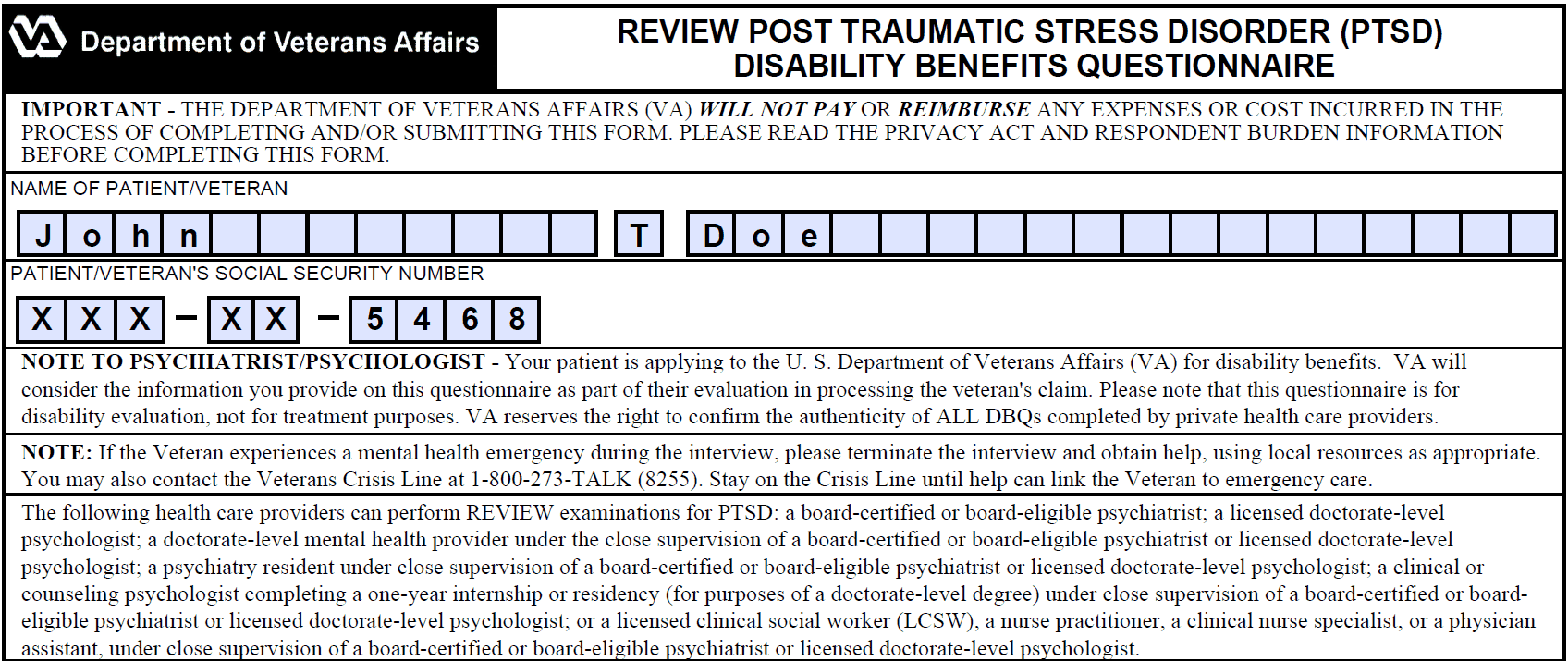
Disability Benefit Questionnaire Reviews, also known as DBQ forms, are the #1 best way to increase your VA disability rating for conditions that are already service connected at 0 percent or higher.
What is a VA Disability Benefits Questionnaire (DBQ)?
A DBQ is a standardized .pdf form created by the Department of Veterans Affairs to give veterans more control of their VA claims.
Obtaining a DBQ from a qualified medical provider enables veterans to present their VA disability condition, mainly the medical diagnosis by ICD Code and your current symptoms of your VA disability, to the VSR and RVSR at the VA for rating purposes.
And guess what else, fellow veterans?
The major benefit of using DBQs is that sometimes the VA will grant a veteran a higher VA rating based upon the information in the DBQ ALONE!
Yes, you heard me correctly.
For simple disability increases, the VA Raters (RVSRs) are authorized by regulation to grant a VA rating increase using the DBQ by itself, assuming it’s competent and credible.
Now, it’s still very likely you’ll get a C&P Exam, but at least you have your medical information baselined by another medical professional PRIOR to the C&P Exam.
For example, if a veteran is already service-connected at 0 percent for Migraines, but you now believe your Migraines meet the higher rating criteria by law, all you need to get the higher rating is a DBQ for Migraines completed by a private healthcare provider.
Veterans will want to ensure the medical diagnosis is confirmed by ICD Code on the DBQ form, and all appropriate blocks are completed by the private medical provider, to include your current symptoms of Migraines.
Note there are more than 70 DBQ Forms on the VA’s website, and the list is constantly being updated.
If you are unable to get a VA disability exam and can’t get a DBQ completed by a VA healthcare provider or one of your private providers, our VA Claims Insider Elite membership program can help!
Best Way to Get 100 VA Disability Tip #4: File for Secondary Service Connection with Credible Medical Nexus Letters

Many VSOs, Attorneys, and Claims Agents focus on primary disabilities for direct service connection.
However, did you know you’re also eligible for secondary claims and something called secondary service connection?
Secondary service connection requires a “showing of causation.”
A showing of causation requires that the secondary disability be shown to be “proximately due to” or “proximately aggravated by” another service-connected disability.
By law, there are three evidentiary elements that must be satisfied to prove secondary service connection on an “at least as likely as not basis.”
- A medical diagnosis of the disability condition in VA medical records or private medical records (unless you also have the disability in your service treatment records)
- Evidence of a service-connected primary disability (such as PTSD, depression, anxiety, tinnitus, migraines, etc.), AND
- Medical Nexus evidence establishing a connection between the service-connected disability and the current disability
The first part can be satisfied with any existing medical evidence in service treatment records, VA medical records, or any private medical records.
The second part can be satisfied with a veteran’s existing service-connected disability rated at 0 percent or higher.
The third part can be satisfied with a Medical Nexus Letter for secondary conditions completed by a qualified medical professional.
The major benefit of going after secondary service connection in a VA disability claim is it’s typically easier to prove the Nexus requirement, especially if you’ve been out of the military for more than one year.
And, of course, if you’re looking for the best way to get 100 VA disability, make sure to consider secondary service connection in your VA claim strategy!
How to Increase My VA Disability Rating Tip #5: Obtain a Buddy Letter from a First-Hand Witness

A VA Buddy Letter is a credible written statement completed by a competent individual 18 years of age or older who has direct, first-hand knowledge of an event or injury and offers an account of what they witnessed or are witnessing in support of your VA disability claim.
These personal statements can be from a fellow service member, spouse, friend, pastor, co-worker, boss, adult child, or any other competent and credible witness who can discuss your disability condition and underlying symptoms.
What Form Should I Use for a Buddy Letter?
A Buddy Letter completed on the VA Form 21-4138 can literally be the cornerstone in winning your VA disability claim.
Why?
Because a Buddy Statement constitutes “lay evidence” under the law, which simply means “after the fact” evidence.
And many times, a veteran lacks medical evidence or documentation about an in-service incident or event from their military service.
A Buddy Statement helps fill-in-the-blanks for the VA Rater and can help prove a veteran’s story on “at least as likely as not basis” for things like the Nexus requirement for service connection.
==> Want to see a real VA Lay Statement Example? Click HERE now <==
The Rating Veteran Service Representative (RVSR) at the VA MUST consider a Lay Statement because it’s considered a secondary source of evidence in support of your VA disability claim.
You might also like, The Value of Submitting a Personal Statement.
Listed below are the 4 essential elements of a buddy letter, along with a VA buddy letter example.
How to Write a VA Lay Statement in 4 Simple Steps
When writing or obtaining a buddy letter in support of a veteran’s VA disability claim, you can simply use the VA Form 21-4138, Statement in Support of a Claim.
The VA Form 21-4138, official .pdf form, is still the PREFERRED method of any personal statements according to VA Rating Officials.
A great VA buddy letter is short and sweet.
Think less is more.
We’re not writing a novel here, veterans!
VA Raters are very busy people, so you want to give them the exact information they need, at the exact moment they need it, to help support your VA disability claim or appeal.
In 3-4 paragraphs, you should explain (1) your name, information, and how you know the veteran. (2) what you witnessed or are witnessing, (3) the veterans’ current symptoms of the disability, and (4) sign and date your name to the best of your knowledge and belief.
Listed below is a VA buddy letter example:
Part 1: Explain How the “Buddy” Knows the Veteran
In part 1, you need to explain how you know the Veteran.
Here is an example of how to write this section:
“My name is John Doe, and I’m the husband of veteran [INSERT VETERANS NAME].
I’m writing this statement on behalf of veteran [INSERT VETERANS NAME].
I have known [VETERAN] since 1999, because we were high school sweethearts.
Over the past 30 years, we have interacted daily.”
Part 2: What You Witnessed and/or Are Currently Witnessing
In part 2, you need to explain in detail what you witnessed or are witnessing about the event or incident.
You do NOT need to explain every detail.
Here is an example of how to write this section:
“When I first met [VETERAN], before she entered active duty military service, she was happy, fun loving, and had no mental health issues whatsoever.
All of that changed in July 2004, when she was raped by another service member while TDY to Lackland Air Force Base, San Antonio, Texas.
It became very evident to me that she suffered from severe PTSD, depression, and anxiety.
I encouraged her to get help and seek treatment many times over the years, but because she was an officer, and worked with senior military leaders, she was afraid of retaliation and reprisal.”
Part 3: Describe the Veteran’s Current Symptoms of the Disability
In part 3, you need to explain the veteran’s current symptoms of the disability.
Again, you do NOT need to explain every detail, just the things you know about.
Here is an example of how to write this section:
“Throughout our marriage, I witnessed her suffer from severe depression, anxiety, insomnia, nightmares, relationship problems, trust issues, anger issues, panic attacks 3-5x per week, memory problems, and sexual dysfunction, among many others.
The rape mentioned above by a fellow service member has affected her so much that it is my belief she cannot have a normal relationship with anyone, anymore, which was a huge reason why we’ve had numerous marital challenges over the years.
I am 100% certain that her PTSD, depression, and anxiety is due to the rape.”
Part 4: Sign and Date Your Name
In part 4, you need to sign and date your name.
Here is an example of how to write this section:
Signed, [INSERT BUDDY NAME HERE], January 23, 2019.
“I CERTIFY THAT the statements on this form are true and correct to the best of my knowledge and belief.”
Think you might need a VA Sworn Declaration? Click HERE for an example.
Increase VA Disability Rating Tip #6: Nail Your C&P Exam
According to Brian Reese VA Insider, the VA Compensation and Pension exam, also known as a C&P exam, is the #1 most important day in the VA claim process.
A veteran can do everything else right to try to increase your VA disability rating, but if you miss your C&P exam or worse, get a Bad C&P Examiner, the results can make or break your final VA rating.
It’s shameful, I know; however, the sad reality is that the VA Raters will rely almost solely on the exam notes presented by the in-person C&P examiner.
Don’t worry though; even if you have a terrible C and P exam, there is still hope, and you can fight it!
>> Click HERE to Learn How to Get a New C&P Exam <<
Top 7 C&P Exam Tips Explained

- Tip #1. Know what’s in your medical records! Read through your records in the days prior to your C&P exam. There is no substitute for knowing what’s in your service treatment records, VA medical records, or any private medical records.
- Tip #2. Review the eCFR, Title 38, Part 4, Schedule for Rating Disabilities for the VA disabilities you’re about to be examined for. This is the governing law for all VA disability claims.
- Tip #3. Do NOT have your best day…this does NOT mean you should lie or stretch the truth. This means that you need to tell the C&P examiner how you are on your very worst days.
- Tip #4. Be UNCOMFORTABLY VULNERABLE…this means that if it’s uncomfortable for you to say to a C&P examiner you don’t know or just met, you need to say it! For example, tell the C&P examiner about the severity of your Erectile Dysfunction and how it’s hurting your relationship with your spouse.
- Tip #5. VA claims for mental health conditions come down to your current level of “Occupational and Social Impairment.” VA Claims for other conditions are all about (1) Pain and (2) Limitation of Range of Motion.
- Tip #6. Know your true story cold and the potential in-service stressors (or other service-connected disability) that caused or made your disability worse, and be prepared to discuss the incident(s) in detail with the C&P examiner.
- Tip #7. You must be prepared to talk about your life in detail. Before joining the military. During the military. And after your active duty service. Make sure you’ve given the C&P examiner a detailed picture of your life and how the military either caused or made your disability worse.
Fellow veterans, read my Top 7 Tips to Prepare for Your VA C&P Exam HERE.
Best Way to Get 100 VA Disability Tip #7: File for VA Total Disability Individual Unemployability (TDIU)
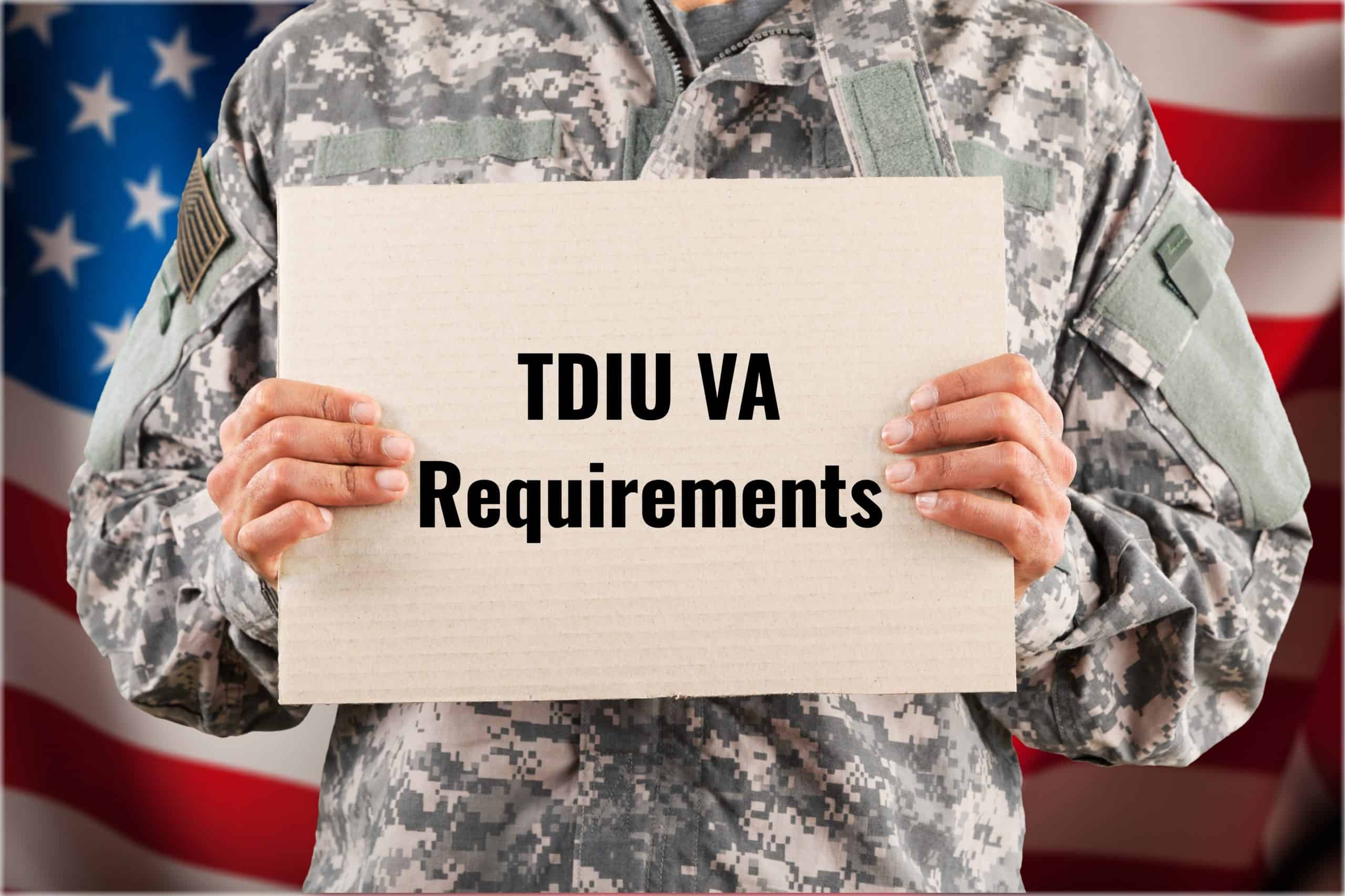
VA TDIU stands for “Total Disability Individual Unemployability,” but it’s often referred to as “Individual Unemployability.”
Did you know disabled veterans who qualify for TDIU are entitled to be paid at the 100% VA disability rate, even if they are rated below 100 percent scheduler, if they can establish that one or more service-connected disabilities prevent them from maintaining substantially gainful employment?
TDIU VA Requirements – Do You Qualify?
You may be able to get individual unemployability disability benefits if you meet both requirements listed below:
- You have at least 1 service-connected disability rated at 60% or more disabling, or 2 or more service-connected disabilities—with at least 1 rated at 40% or more disabling and a combined rating of 70% or more AND,
- You can’t hold down a steady job that supports you financially (known as substantially gainful employment) because of your service-connected disability. Odd jobs (marginal employment) don’t count.
*Note: In certain cases, for example, if you need to be in the hospital often—veterans may qualify for 100 TDIU at a lower disability rating than listed above.
About The Author

Brian Reese
Brian Reese is a world-renowned VA disability benefits expert and the #1 bestselling author of VA Claim Secrets and You Deserve It. Motivated by his own frustration with the VA claim process, Brian founded VA Claims Insider to help disabled veterans secure their VA disability compensation faster, regardless of their past struggles with the VA. Since 2013, he has positively impacted the lives of over 10 million military, veterans, and their families.
A former active-duty Air Force officer, Brian has extensive experience leading diverse teams in challenging international environments, including a combat tour in Afghanistan in 2011 supporting Operation ENDURING FREEDOM.
Brian is a Distinguished Graduate of Management from the United States Air Force Academy and earned his MBA from Oklahoma State University’s Spears School of Business, where he was a National Honor Scholar, ranking in the top 1% of his class.




